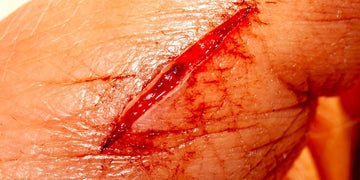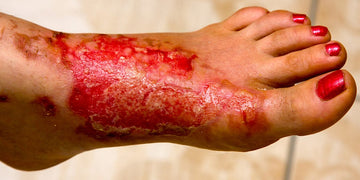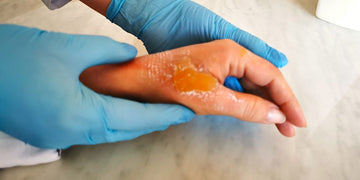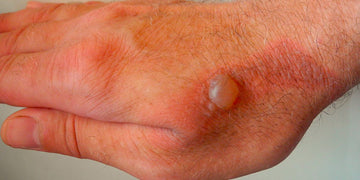Skin lacerations are a common injury that can occur from everyday activities. If not treated quickly and properly, skin lacerations can become infected and lead to more serious health complications. In this article, we’ll discuss the importance of healing skin lacerations quickly and provide tips on the best ways to do so efficiently. We will also share information on how to prevent infection when healing skin lacerations.
The importance of healing skin lacerations quickly.
Healing skin lacerations quickly cannot be understated. When left untreated, even the most minor cuts and scrapes can become infected, which can then lead to more serious health complications. Quickly healing skin lacerations not only prevents infection, but also minimizes scarring and speeds up the overall healing process.
The benefits of quickly healing skin lacerations.
There are many benefits to quickly healing lacerations, including reducing the risk of a bacterial skin infection, minimizing scarring, and speeding up the overall healing process. In addition, quickly healing skin lacerations can help prevent the spread of infection to other parts of the body.
The best ways to heal skin lacerations quickly.
It is important to keep the wound clean in order to prevent infection and promote healing. The best way to clean a wound is with soap and water. You should gently clean the wound with a mild soap and cool water. Be sure to rinse the wound thoroughly. You can also use an alcohol-free cleansing wipes if you prefer.
What type of dressing to use.
Once the wound is clean, you will need to apply a dressing to the laceration. The type of dressing you use will depend on the size and depth of the wound. For small wounds, you can use a Band-Aid or similar adhesive bandage. For deeper or larger wounds, you may need to use a gauze pad held in place with medical tape. Be sure to change the dressing regularly, as directed by your healthcare provider.
How to prevent infection when healing skin lacerations.
It is important to keep the wound clean in order to prevent infection. The best way to do this is to gently clean the wound with soap and water. You can also use a mild disinfectant. Be sure to pat the wound dry after cleaning it.
Applying a topical antibiotic.
After you have cleaned the wound, you should apply a topical antibiotic to treat the wound like Vitastem Ultra. This will help treat the laceration and prevent infection. Be sure to follow the instructions on the package for how long to leave the ointment on the wound.
Changing the wound dressing regularly.
It is important to change the dressing regularly in order to prevent infection. The best way to do this is to remove the old dressing and apply a new one every day or as directed by your doctor.
The bottom line on treating lacerations
It is important to heal skin lacerations quickly to prevent infection and more serious health complications that may result of it being left untreated. The best ways to heal skin lacerations quickly are to clean the wound, use an appropriate dressing, and change the dressing regularly. To prevent infection when healing skin lacerations, it is important to keep the wound clean, apply a topical antibiotic ointment like Vitsatem, and change the dressing regularly.
If you or a loved one has a laceration, you should ask your doctor if Vitastem Ultra can be a good treatment for it. Vitastem Ultra is one of the world’s strongest first aid & topical antibiotic treatments that has proven to be 10x more effective at treating and healing lacerations and other wounds when compared to all other brand name products the past 10 years. Vitastem can quickly kill all harmful bacteria, help heal the laceration quickly, so you can heal and get back to living your life to the fullest once again.








